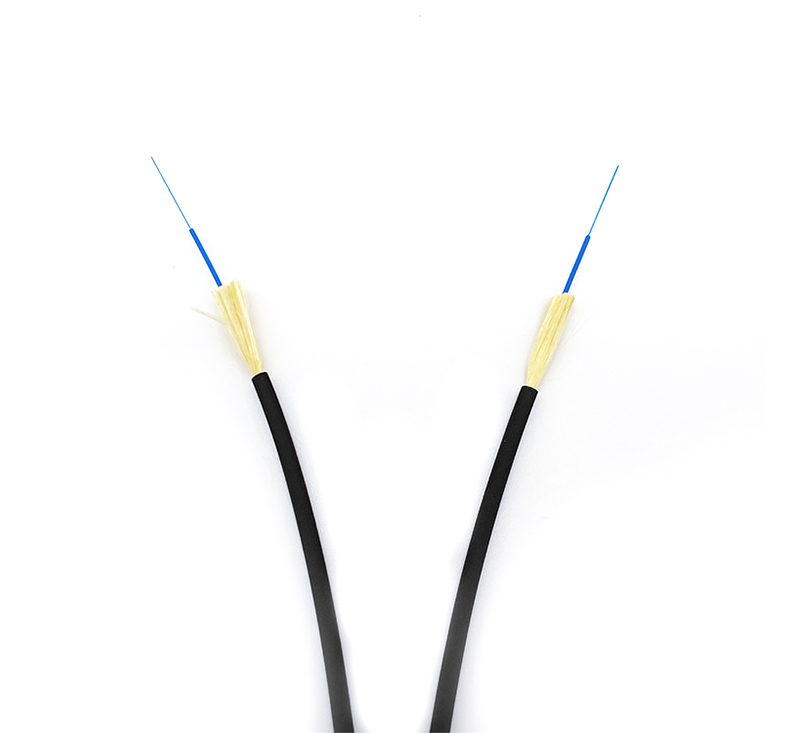According to the transmission mode of light in the fiber, it can be divided into: single-mode fiber and multi-mode fiber. There is only one word difference between single-mode and multi-mode, so what is the difference between the two, is it just the difference in the number of touches? Let's take a look at the difference between the two.
Single-mode optical fibers can only transmit single-mode signals, while multi-mode optical fibers can transmit multi-mode signals. Multimode optical fiber (MMF): As the name suggests, it is an optical fiber that can transmit multiple modes of electromagnetic waves (of course, light waves here); Due to the transmission of multiple modes, there is a large intermodal dispersion, and the information capacity that can be transmitted is small; the multimode fiber core is relatively large, generally 50um, and the numerical aperture is about 0.2; the number of modes depends on the core. diameter, numerical aperture and wavelength.
Single-mode fiber (Single-mode fiber = SMF): It can only transmit signal waves in one mode, but it must meet the conditions: I seem to remember that the textbook says that it is related to the thing called normalized frequency, and the core needs special Thinner, preferably 3 or 4 times the working wavelength; so single-mode light is much thinner than multi-mode fiber in terms of appearance; single-mode fiber only transmits one mode, so there is no modal dispersion.
Multimode fiber is used for small-capacity, short-distance systems, and single-mode fiber is used for backbone, large-capacity, long-distance systems. The core diameter of single-mode fiber is generally 9/125, while the multimode fiber is 50/125 or 62.5/125.
Single-mode and multi-mode are relative to specific wavelengths. The same fiber may be single-mode or multi-mode at different wavelengths. There is no single-mode multi-mode light. The light source has single longitudinal mode~(dfb) and multi-longitudinal mode According to the mode (fp), the fiber diameter of multimode fiber is thinner than that of single mode. Single mode 652 is 62.5/125, while multimode has 50/125 and 62.5/125. It is generally 1.5~2 times the number of single-mode single-mode cores. From a practical point of view, multi-mode is basically used in data access optical cables. Compared with single-mode, the biggest disadvantage of multi-mode is inter-modal dispersion (due to The same light has different rates in different modes).
In China, 62.5/125 multimode fiber is mainly used. As for the difference between the two, it seems that the use of the cable is different, and the 50 fiber is mostly used for indoor optical cables.

Single-mode fiber only transmits one mode of fundamental mode, and multi-mode can transmit multiple modes. Single-mode is mainly used for long-distance trunk lines, and multi-mode is used for local areas. Someone said that single-mode is much thinner than multi-mode, but it is not true. The diameter of the two fiber cladding is 125, but the core diameter is different. In general, single-mode is not directly connected to multi-mode and is converted through equipment.
Optical fiber is divided into two types: multimode fiber and single mode fiber. The difference between multimode fiber and single mode fiber is mainly in the way of light transmission, and of course the bandwidth capacity is different. The diameter of the multimode fiber is large, and the beams of different wavelengths and phases are continuously reflected and transmitted along the fiber wall, causing dispersion, which limits the transmission distance and bandwidth between the two repeaters. The bandwidth of the multimode fiber is about 2.5Gbps. The diameter of the single-mode fiber is relatively small, and the light travels in a straight line in it and is rarely reflected, so the dispersion is reduced, the bandwidth is increased, and the transmission distance is also extended. However, the price of the supporting optical terminal equipment is relatively high, and the bandwidth of single-mode fiber exceeds 10Gbps.
The multimode fiber is greatly affected by the pulse signal expansion (chromatic dispersion) of the higher mode, while the single mode fiber better solves the problem of intermodal dispersion. SMF CORE 8.3-9.3 um. MFD is usually 9.3um.
In security applications, the most common determinant of choosing between multimode or singlemode is distance. If only a few miles, multimode is preferred because LED transmitter/receivers are much cheaper than lasers required for single mode. For distances greater than 5 miles, single-mode fiber is best. Another issue to consider is bandwidth; if future applications are likely to include the transmission of large bandwidth data signals, then single-mode would be the best choice.










